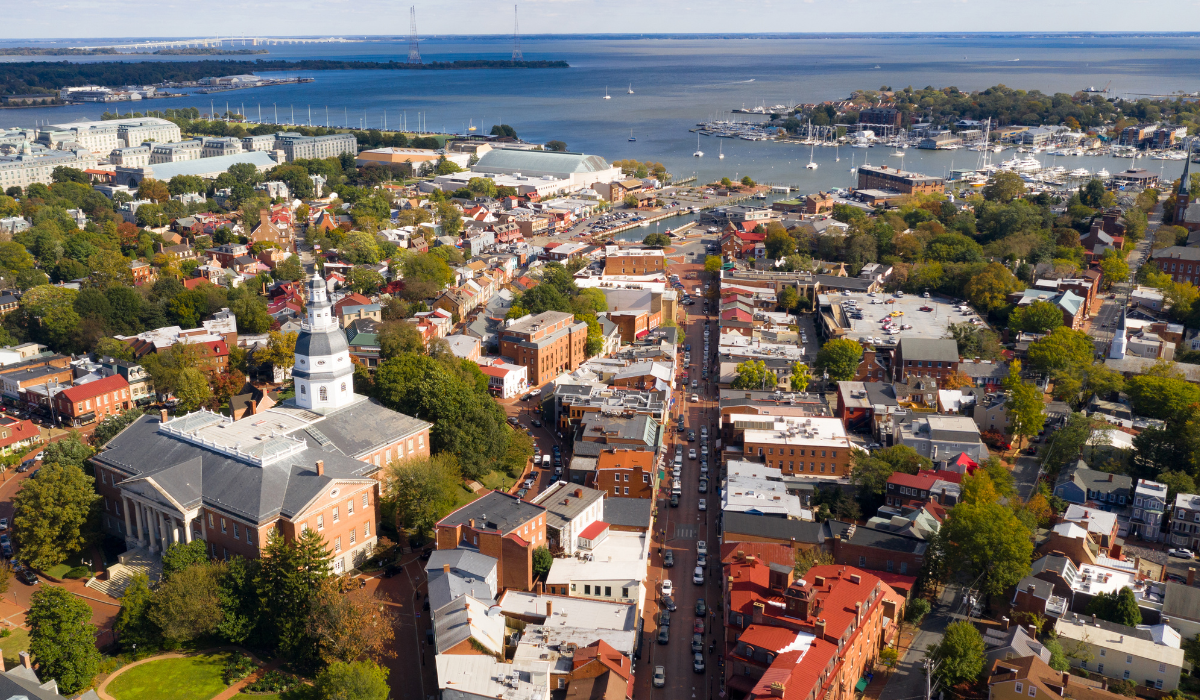The Anne Arundel County commercial real estate market continues to perform much better than its neighboring jurisdictions – particularly Baltimore City and Washington, D.C. – due partly to plentiful free parking, necessary amenities, and the allure of the Annapolis waterfront. That was the consensus of several brokers and developers participating in Bisnow’s recent “Exploring Annapolis and Anne Arundel County” event.

Left to right: Moderator David Katz, Katz Day, LLC; Justin Mullen, Hyatt Commercial Real Estate; Matt Lenihan, St. John Properties; and Timothy Hogan, Hogan Companies
“I had lunch recently with a top broker working in Washington, D.C. and he told me not to believe reports on how slow leasing activity is,” said Timothy Hogan, President of Hogan Companies. “It is considerably worse.”
John Rosso, Principal with Rosso Commercial Real Estate Services, calls Baltimore and Washington, D.C. “ghost towns.”
However, Anne Arundel County has bucked that trend because executives are able to “get the best of both worlds” in terms of shorter commutes, great restaurants, and all the wonderful things offered by downtown Annapolis, Rosso said. “Many executives have waterfront homes and do not want to drive 45 minutes or more each way to work in one of the urban areas. The Annapolis area is supply-constrained and does not have large blocks of space to begin with.”
St. John Properties’ Matt Lenihan said the company’s flex/R&D product in the County is “approximately 90 percent leased” and companies are increasingly exhibiting flight-to-quality tendencies.
“Companies continue to gravitate toward locations that are amenity-packed. Activity and leasing over the past three years in Anne Arundel County, in general, has been extremely strong,” said Lenihan, Senior Vice President of Leasing. “We are seeing particular strength among medical office and daycare users.”
“Riva Road is starting to look a lot like Rockville Pike, in terms of the quality of retail tenants and the overall density,” Rosso added. “Rental prices are rising accordingly. Residential construction remains strong and more rooftops are being added in Anne Arundel County and, when that happens, retail follows. We are also starting to see DC-quality residential and retail projects coming in.”
 Justin Mullen, President of Hyatt Commercial, also expressed optimism for the long-term health of the region but said the only blemish on the Anne Arundel County region currently is “the dramatic slowdown of sales transactions.” This is being caused by the tightening of financing and no region around the country is immune.
Justin Mullen, President of Hyatt Commercial, also expressed optimism for the long-term health of the region but said the only blemish on the Anne Arundel County region currently is “the dramatic slowdown of sales transactions.” This is being caused by the tightening of financing and no region around the country is immune.
Hogan expressed his wish to see outdated and obsolete retail centers, led by Marley Station and Westfield Annapolis Mall, be repurposed and mentioned residential and senior living as possible new uses. “There are lots of creative developers and architects out there and I would like them to focus their efforts on bringing new life to these projects so they can better serve the needs of the community. Of course, this will take buy-in and cooperation from the County government.”
MacKenzie Commercial Real Estate Services reports a 7.9 percent vacancy rate in the BWI Corridor and a 6 percent vacancy rate in the MD Route 2 Corridor, as compared to 24 percent in the CBD section of Baltimore City and a 13.5 percent vacancy rate for the entire Baltimore metropolitan region. The cumulative rental rate for the metropolitan region inched up slightly from the previous quarter, rising to $24.83 per square foot from $24.50.
The quarterly report stated that “the annual summer slowdown impacted the Baltimore Metropolitan Area’s commercial real estate industry a bit earlier this year, with the volume of showings and overall activity exhibiting a decline beginning in May.”
All things considered, Anne Arundel County is keeping its head above water and the long-term outlook is strong, the panelists agreed.